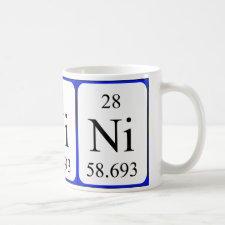
Authors: Su HJ, Zhao Y, Li J, Tan TW
Article Title: Biosorption of Ni2+ by the surface molecular imprinting adsorbent.
Publication date: 2006
Journal: Process Biochemistry
Volume: 41
Issue: (6)
Page numbers: 1422-1426.
DOI: 10.1016/j.biomaterials.2006.03.020
Alternative URL: http://www.sciencedirect.com/science/article/B6THB-4J5C7V2-1/2/4e79e8feb01419c83f5583e6fcbf1c11
Abstract: The surface molecular imprinting adsorbent on the waste biomass from penicillium industry prepared by using imprinting technology can considerably increase adsorption capacity for the imprinted ions. The adsorption capacity for the imprinted ions (Ni2+) of the biomass surface molecular imprinting adsorbent (the surface imprinted adsorbent) obvious increased to 82.5 mg g-1 (the initial Ni2+ concentration of 1000 mg L-1) from 56.2 mg g-1. Biosorption ability for Ni2+ of the surface imprinted adsorbent was notably decreased in citric acid solution, however, no obvious effects at higher Ca2+ or Mg2+ ion concentration in the solution were observed. The surface imprinted adsorbent had higher mechanical strength and better stability in the acid solution compared with the untreated mycelium adsorbent. The adsorption efficiency of the surface imprinted adsorbent was higher than that of the activated carbon, the dynamic adsorption capacity for Ni2+ reached 12.3 mg g-1 at initial Ni2+ concentration of 30 mg L-1 and the adsorbent could be easily desorbed by using 0.05 M HCl solution in wastewater treatment
Template and target information: nickel ion, Ni(II)
Author keywords: The biomass surface molecular imprinting, biomass, heavy metal ion, Bioadsorption, wastewater treatment



Join the Society for Molecular Imprinting

New items RSS feed
Sign-up for e-mail updates:
Choose between receiving an occasional newsletter or more frequent e-mail alerts.
Click here to go to the sign-up page.
Is your name elemental or peptidic? Enter your name and find out by clicking either of the buttons below!
Other products you may like:
 MIPdatabase
MIPdatabase









